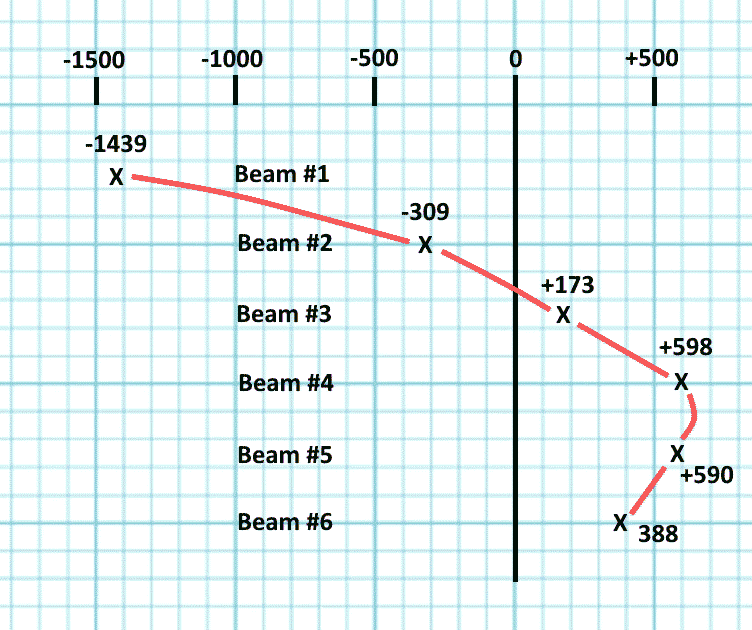Hi all,
I am currently assessing an existing composite steel girder-concrete deck bridge due to anticipated ground movements causing the abutments to tilt inwards.
The bridge has a span of approximately 39m and a skew of approximately 34 degrees - a fairly standard bridge. East end is the "fixed" end with pot bearings released in the transversal direction only and 1no. fixed pot bearing, and West end is the "free" end with free pot bearings and 1no. sliding pot bearing in the longitudinal direction (see attached articulation diagram).
However, when modelling the structure as a 3D plate and beam finite element model (as recommended in SCI P356) I get unrealistically high horizontal ULS reactions on the "fixed" end, before any ground movements are even applied, which pretty much mean the bearings are theoretically failing by up to 200%, based on UK assessment standards CS454. This is obviously not true and inspection reports do not flag up any bearing defects or damage.
The standard response to this is that this is probably a finite element modelling issue and engineering judgement says that the way the bridge was originally designed, with the articulation diagram attached, it was never intended to take such high horizontal reactions, other than the standard longitudinal braking loads and other accidental lateral loads.
On the other hand, no one has been able to provide an explanation as to why this is occurring, with 3no. different finite element models from 3no. different softwares highlighting the same issue.
The bearings have been modelled at their exact location i.e. bottom flange, so if this was modelled with beam elements they would've been modelled with offsets. I found this offset to be one of the reasons for the high reactions. The model is also staged to take into account construction sequence and locked in stresses after the wet concrete from the deck starts acting composite with the girders.
Has anyone ever come across this, or would someone have a plausible explanation for this? See attached bridge model and articulation diagram.
Thanks in advance!
I am currently assessing an existing composite steel girder-concrete deck bridge due to anticipated ground movements causing the abutments to tilt inwards.
The bridge has a span of approximately 39m and a skew of approximately 34 degrees - a fairly standard bridge. East end is the "fixed" end with pot bearings released in the transversal direction only and 1no. fixed pot bearing, and West end is the "free" end with free pot bearings and 1no. sliding pot bearing in the longitudinal direction (see attached articulation diagram).
However, when modelling the structure as a 3D plate and beam finite element model (as recommended in SCI P356) I get unrealistically high horizontal ULS reactions on the "fixed" end, before any ground movements are even applied, which pretty much mean the bearings are theoretically failing by up to 200%, based on UK assessment standards CS454. This is obviously not true and inspection reports do not flag up any bearing defects or damage.
The standard response to this is that this is probably a finite element modelling issue and engineering judgement says that the way the bridge was originally designed, with the articulation diagram attached, it was never intended to take such high horizontal reactions, other than the standard longitudinal braking loads and other accidental lateral loads.
On the other hand, no one has been able to provide an explanation as to why this is occurring, with 3no. different finite element models from 3no. different softwares highlighting the same issue.
The bearings have been modelled at their exact location i.e. bottom flange, so if this was modelled with beam elements they would've been modelled with offsets. I found this offset to be one of the reasons for the high reactions. The model is also staged to take into account construction sequence and locked in stresses after the wet concrete from the deck starts acting composite with the girders.
Has anyone ever come across this, or would someone have a plausible explanation for this? See attached bridge model and articulation diagram.
Thanks in advance!

